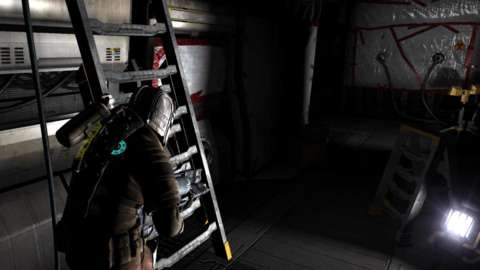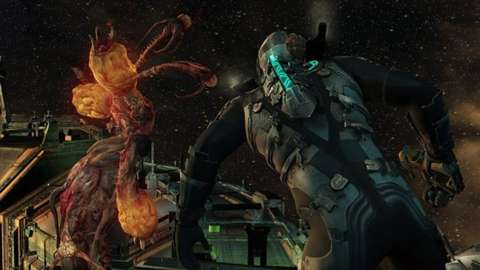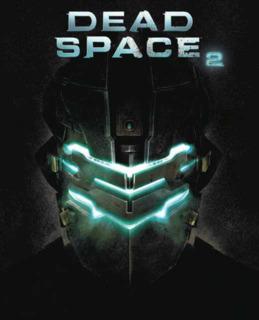After the unexpected success of Dead Space, it was inevitable that EA churned out a sequel, but this game fared a lot better than many sequels do, in terms of quality. Visceral took a masterpiece of a game and they added in some great new atmospheric elements, abused the protagonist in new and more disturbing ways, and dialed up the action gameplay. Some people believe that this game may almost trump the original, but the first game has a charm that will never be re-created. From the very beginning, Isaac is taken from the hell of his nightmares and crumbling sanity and immediately thrown into a real hell of Necromorphic proportions; in a straight-jacket, no less. The escape from the medical ward was probably one of the best sequences in a survival horror game, and hopefully if the franchise continues, we will see more things like it.

The sad reality is, the most intense and scary parts of the game, game-play and atmosphere wise, took place on the Ishimura. Again. About a 4th of the playable Ishimura from the original returns but that short segment of the game was the most fun. Walking through those halls, taped up and full of tools to fix them, brought back all your memories of the first game of being quite concerned at every corner. Rooms like the decontamination chamber made you worry about what new horrors you would face, only to trick you by not making you fight anything (once anyway).
In the last few chapters, the game basically turns back into the end of the first game, forcing you to run from the unkillable necromorph until you can get to the marker - only to participate in a boss fight that seemed a uncomfortably reminiscent in setting and concept to the ends of God of War 1 and 3. It was a wild thrill ride if you didn't have enough ammo or health or stasis to waste on the onslaught of necromorphs they threw at you, pretty easily trumping all other situations in the game beforehand.
Dead Space 2 in-arguably improved upon the zero-g sequences from the first game, as far as control goes. Counter-acting that in a bad way though, none of those zero-g sequences were remarkable or challenging or really even fun. All of the zero-g puzzles - all two of them, in fact all of the puzzles in general, happened to be disappointingly easy. Visceral added in much more freedom to control Isaac on three dimensions, rather than the point to point jumping of the first game. It's just unfortunate that they truly didn't explore this freedom for more than 3 minutes at a time.

While the sequel kicked up the gore and death scenes noticeably over the first game, it really feels like they missed the point nearly to the same extent that Capcom missed the point with RE5 and RE6. They replaced atmospheric scares and psych-outs with action, on top of more action. The best parts of the game are easily the first 10 minutes, the Ishimura, and the last 10 minutes, which seems to defeat the purpose of having a two disc long game (Yes I do my main gaming on 360). Almost everything in between was filler - juicy filler, but filler nonetheless. Just a lot of big rooms with a lot of enemies, or a big room with a few big enemies - In what is similar to one of the absolute worst elements of Uncharted, you can pretty much tell which rooms are going to throw 100 necromorphs at you (Hint: The big ones) - and a lot of shock or wtf moments.
For example, the first Crawler is often cited as one of the most shocking moments in the game. Sure it is, if you've never played a video game before, or Dead Space. It's quite obvious after Dead Space 1 and almost half of Dead Space 2, by the time you encounter a crawler, that anything with an orange glow either is explosive, or is a weak spot. Games in general tend to highlight the explodey part in red or orange, it's no different than the arcades where the boss flashed red when he was about to die. So there's hardly anything surprising about a necromorphed baby blowing up a crazy Unitologist woman. Even the Brutes, Tripods, and the Tormenter were hardly intense or concerning enemies, considering how easy they are to kill with stasis.
Admittedly the game is engaging and never gets too boring, but the game has no momentum whatsoever until you meet Ellie. People complained misguidedly about how the Ishimura supposedly lacked distinct environments that differed from each other and offered variety, in Dead Space 1, but the simple fact is that all of the mission objectives and environments were perfectly natural to what science fiction has established as the "starship" archetype. There would be an engineering deck, a mining deck (in a mining ship), medical bay, the bridge, the turret defenses, cargo bays, shuttle bays, hydroponics, all of that. Isaac happens to be an engineer and, his reason for being there was to fix the Ishimura. Everything you did had purpose, even if it was to escape.
In stark contrast, nothing you do in Dead Space 2 has any defensible purpose whatsoever, until Chapter 7. The first half of the game, nearly, is about you finding Daina, and then being lied to - which pretty much pans out into a ridiculous and uncalled for action scene. Obviously, the enhanced variety in environments - like the Unitology church, which itself serves the objective of shedding more light on Unitology, but not your going there; the school, the shopping district, the government sector, the apartments - these all work towards showing you this space station has more stuff on it than just hallways, but they are just means. There is nothing to justify them. Getting your ass kicked to fix parts of the Ishimura had a point - you were going to die if you didn't. Suffice it to say, you aren't going to die if you didn't pay a visit to the elementary school. Surely there were 18 other ways to get anywhere else in the Sprawl, considering it's a city. For example, you could get to a shuttle, and get the **** out of there. What difference does it make, in hindsight after the first hour of Dead Space 3, anyway?
Isaac's worsening mental state, which has developed nearly into full-blown schizophrenia, was an interesting concept in the game but Visceral truly did not capitalize on it as much as they could have. Sequences, which occur quite routinely in the game, are almost always clearly distinguishable from reality and so it invalidates the mind-**** factor. There are only two moments in the game where they seem quite real, and neither lasts very long. It would have been much more effective if they had the delusions do real damage to you, only for them to fade and then you find out you didn't lose any health. Other than the end of the game, that is, where it is clearly not really happening but the threat is real and will cause you to die.
If you are a fan of Dead Space 1 or survival horror, there's no reason to not play this game through and give it the time it deserves. For those that have not played Dead Space 1, seriously, go play it first. This game is a different experience and cannot be put into perspective without having finished the original. At this point the time has come and gone, but this game was definitely worth a purchase at the full retail price. Just don't expect Dead Space 1 when you get Dead Space 2, because you won't find it here. Where Dead Space 1 was mostly a survival horror game, Dead Space 2 errs more on the side of action shooter. Fortunately, it's still better than RE5 and RE6 combined.

